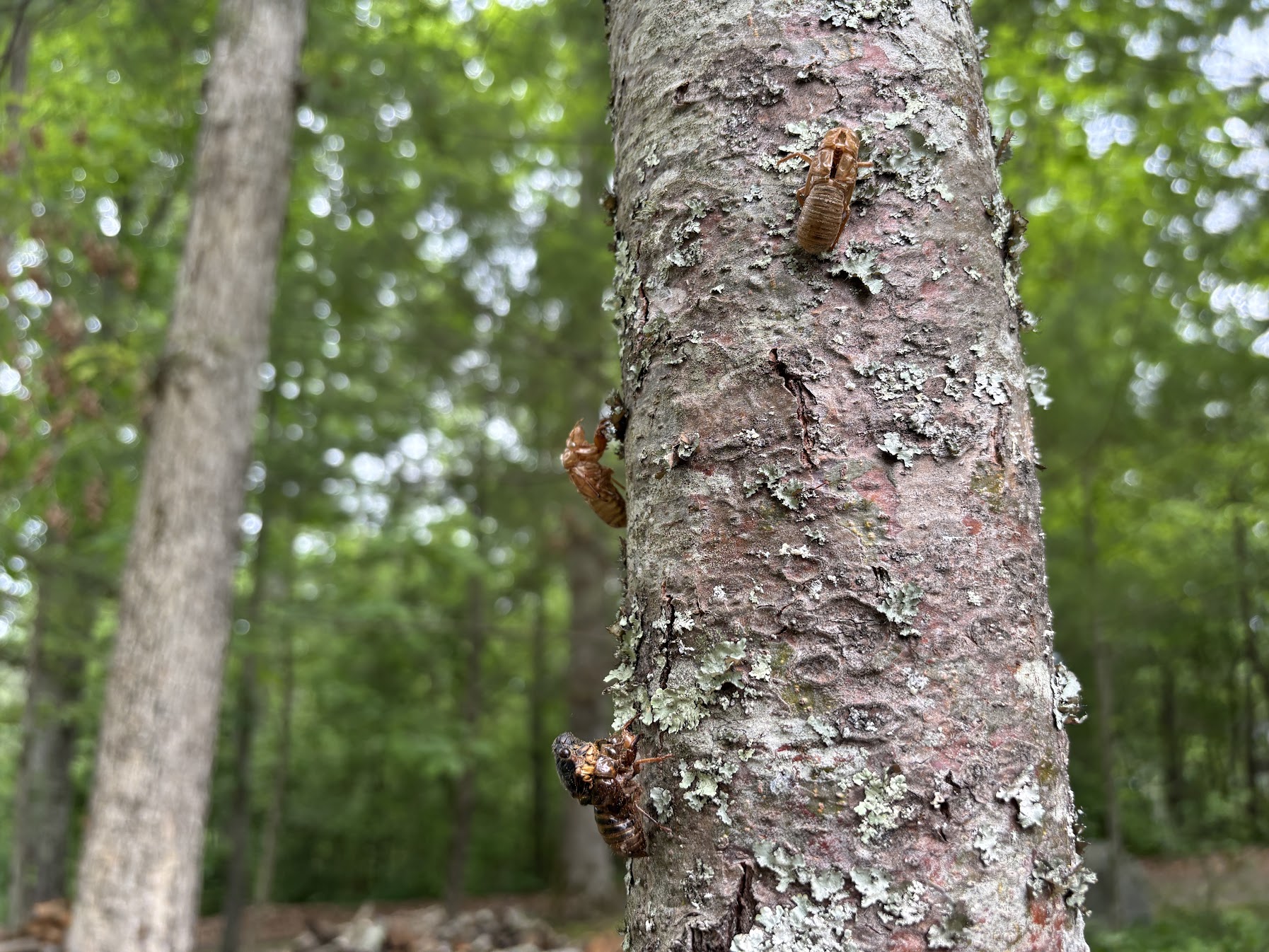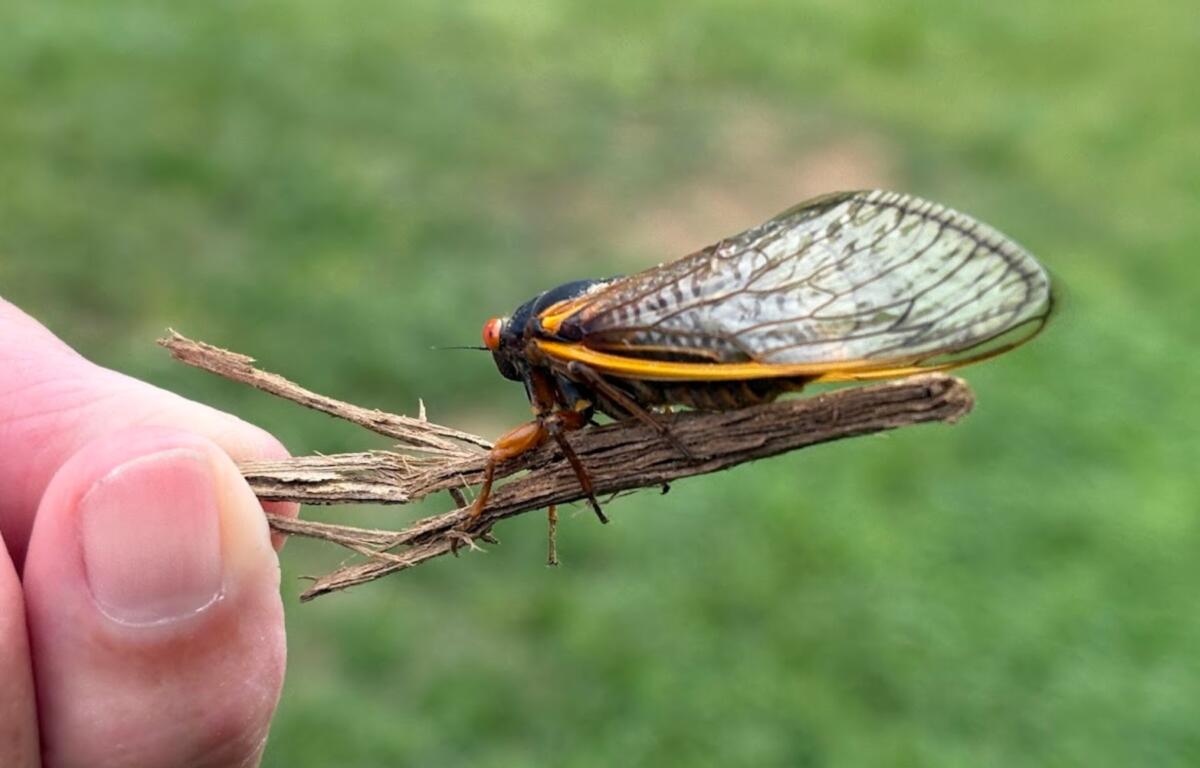ASHEVILLE, N.C. (828newsNOW) — If you’ve heard a cacophonous droning noise around town the last few days, it’s not a UFO or a fire alarm. Instead, 7-year-old Mark explained, it’s the love song of cicadas, one of the loudest insects in the world.
Mark provided more information about the noisy insects in our video interview below:
Cicadas are fascinating insects known for their loud buzzing calls and unique life cycles. And, according to Smithsonian Magazine, a full-scale cicada emergence like the one happening now can reach a deafening crescendo as millions of males call for mates at the same time.
“I’m not sure how they do it,” Mark said of the noise. “It’s only the males, though.”
According to treehugger.com, the cicadas’ love songs are from males rubbing their wings together and using a special organ on their exoskeleton called a tymbal, which creates a series of rapid clicks. They produce two sounds: one to attract mates and another to repel predators. Their songs can reach 120 decibels, which is as loud as a chainsaw, and can be heard up to a mile away.
This summer, the eastern U.S. will be inundated with trillions of Brood XIV periodical cicadas, according to a National Geographic article.

“These large, red-eyed insects emerge from the ground at 13- or 17-year intervals, filling the air with their distinctive buzzing sound. Dubbed ‘the mother of all 17-year broods,’ Brood XIV was last seen in the U.S. in 2008, but sightings date back to the Plymouth colony in 1634.
“I know they’re old,” Mark said. “I think they could have been living back when the dinosaurs were living.”
He’s right. According to Ask An Entomologist, cicadas have been around somewhere between 40 million and 200 million years. The earliest cicadas have been found in fossil beds from the Jurassic period.
The 17-year cicada spends nearly two decades underground as a nymph. These nymphs emerge in cycles and molt into adults when the soil temperature about 8 inches below the surface reaches 64 degrees, according to the North Carolina Cooperative Extension.
Adult cicadas live for only about two weeks, during which their sole purpose is to mate and lay eggs. After mating, females make cuts in the twigs and branches of trees and shrubs, where they deposit eggs in double rows about 4 to 5 inches long.
The eggs hatch in six to 10 weeks. The new nymphs fall to the ground, burrow into the soil and feed on tree roots for the next 17 years.

After their brief appearance above ground — typically lasting four to six weeks — the cycle begins again.
Mark said there was one thing he would like to know about the insects.
“Why are they such good hiders?”
“Most scientists agree that the most likely reason why 17-year cicadas spend so long underground is to avoid predators. By coming to the surface in such a large group, some cicadas get eaten but many cicadas will survive,” according to Purdue University.
Cicadas provide food for birds, bears and snakes. They also benefit the ecosystem by contributing nitrogen to the soil when they die and help aerate lawns, improving water filtration,” according to a Beauty of Nature Facebook post.
“Cicadas are actually just our rowdy friends who haven’t settled down,” the Facebook post said. “So just let nature do her thing.”


